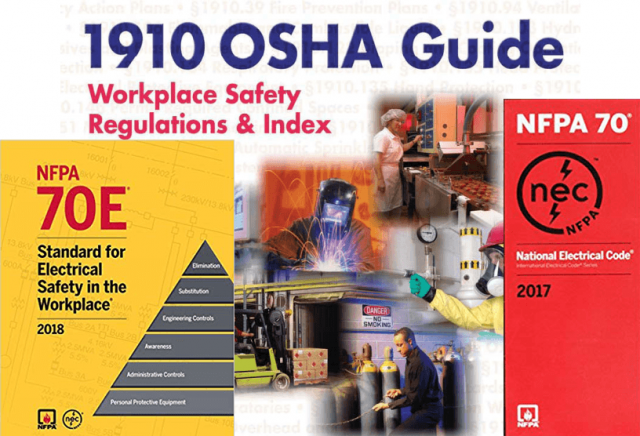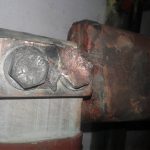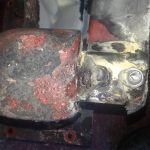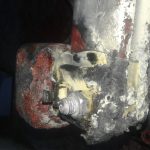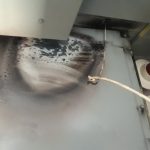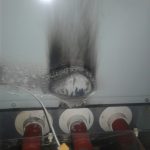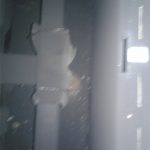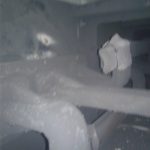Electrical Injuries
Electrical injuries represent a serious workplace health and safety issue. Many workers who experience electrical injury have insufficient training for working on or around energized electrical equipment. The best way for anyone who works with electrical systems to prevent injury to themselves or others, as well as damage to property, is to practice proven electrical safety methods. Electrical safety programs in the workplace not only decrease the incidence of injury, but also protect companies and their employees from the financial obligations of a work-related accident.
Electrical Burns
Electrical safety is critical. The codes and regulations that determine safe practices list safety requirements, however, these were written in very technically manner that the average person has a difficult time understanding exactly what they need to do to ensure safe installations and working environments.
The are two (2) types of electrical burns
- electrical burns from direct contact with current
- thermal burns from arc flashes and blasts
Electrical arc flash injuries include
- concussion
- burns
- impalement
Arc Flash Damage to Equipment
Causes of Arc Flash and Arc Blast
A short-circuit or fault occurs when the insulation between energized electrical phase conductors, or between a phase conductor and ground, is damaged, absent, or compromised.
During a "bolted" fault, the fault current flows over a conductive path, but only a little energy is released into the surrounding environment during the fault. During an arcing fault, however, the fault current flows through the air rather than through a conductor or busbar and a great deal of thermal energy is released into the environment. This sudden release of thermal energy is referred to as an arc-flash event.
An arc flash occurs when powerful, high current travels through the air. This occurs when high voltage differences exist across a gap between conductors. The result is an instant release of tremendous amounts of energy with temperatures as high as 36,000 OF or 20,000 OC.
The arc fault current is less than the available bolted fault current and below the rating of circuit breakers, which means these will not trip and the full force of an arc flash will occur. The equation for electrical energy is "volts x current x time". The transition from arc fault to arc flash increases in intensity as the pressure wave develops.
Factors that can contribute to an arc flash or blast include:
- Available short-circuit current
- Dirt buildup in the equipment
- Moisture and humidity
- Voltage
- Continuous motor operation during a fault
The intense heat and light emitted by an arc flash can cause severe burns, destroying skin and tissue. An arc flash can ignite or melt clothing, resulting in further burns. The incidence of death is more likely to increase with severity of burns, the percent of body area affected, and age of victim.
Arc blast can produce a pressure wave with damaging sound levels and excessive pressure. The pressure wave can rupture eardrums, and can cause lungs to collapse. The intense heat from the arc flash may melt metal electrical components and blast molten droplets considerable distances.
Accident and Injury Prevention
Occupational Health and Safety mandates that all services to electrical equipment must be performed in a de-energized state. If it is necessary to perform hot works then the recommendation of NFPA 70E, Article 130 should be used as a tool to comply. Employers are also responsible for complying with the electrical equipment labeling requirements which state that electrical equipment such as switchboards, panel boards, industrial control panels, and motor control centers have to be field marked to warn qualified persons of potential electric arc flash hazards.
The best way to prevent injuries is to stay as far as possible from possible electrical hazard sources. The severity of inury to a person is diminished by approximately the square of the distance from the arc. Twice as far away from the arc source equates to one-fourth the damage.
Appropriate personal protective equipment can likewise reduce the risk of injuries. Workers in areas where there are potential electrical hazards have to use electrical protective equipment that is appropriate for specific parts of the body to be protected and for the work to be performed. The purpose of PPE is to protect individuals exposed to health and safety hazards from the risk of injury by creating a barrier against various hazards.
References:
- Occupational Injuries From Electrical Shock and Arc Flash Events - Richard B. Campbell & David A. Dini
- Electrical Safety Code Manual - Kimberley Keller
- NFPA 70E - Electrical Safety in the Workplace
